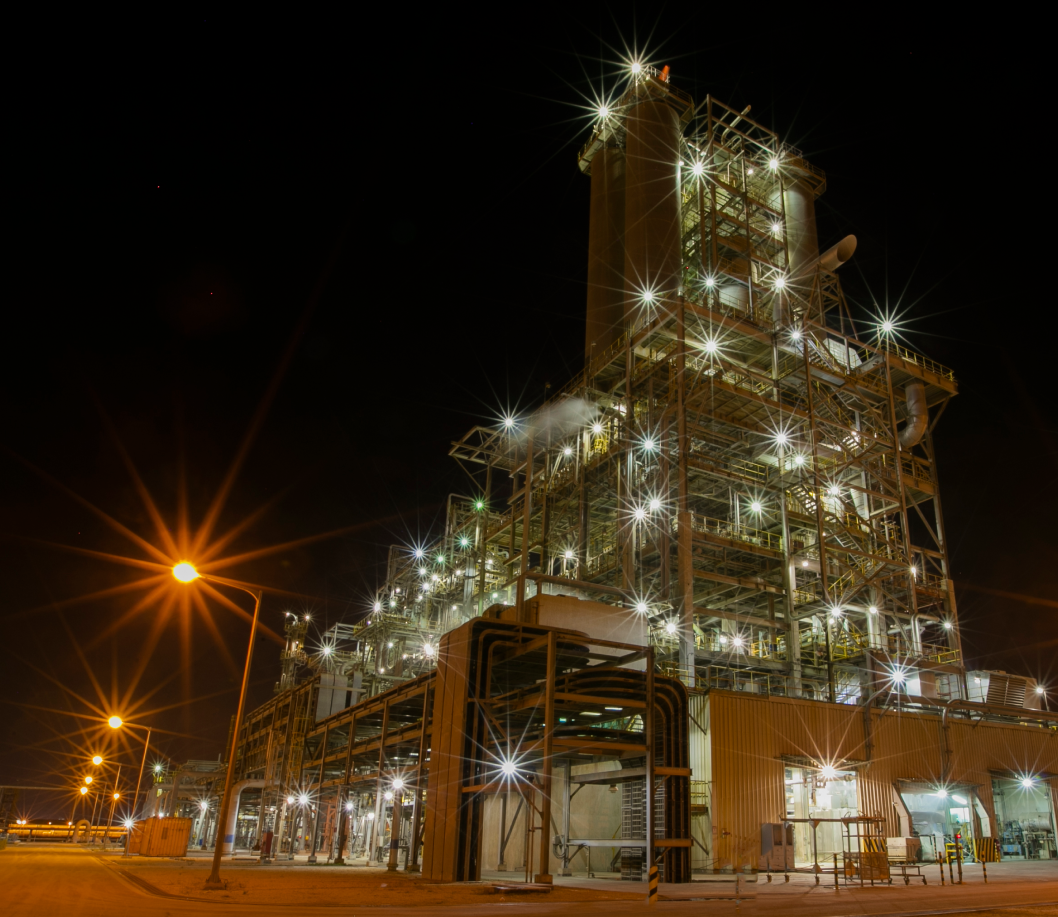Process Description
- Propylene, ethylene catalyst and any other required co-monomers are fed into the reactor(s). Hydrogen is added to control the molecular weight.
- Polymerization conditions (temperature, pressure and reactant concentrations) are set by the polymer grade being made.
- The reaction itself is exothermic and reactor cooling is achieved by flash heat-exchange, where liquefied reactor gas is mixed with fresh feed and injected into the reactor; flash evaporation of the liquid in the polymer bed ensures maximum heat exchange.
- The polymer powder is discharged from the reactor and separated in a discharge vessel at atmospheric pressure.
- Any unreacted monomer separated from the powder is compressed and either recycled or returned to the upstream olefins unit for recovery.
- The polymer is flushed with nitrogen in a purge vessel to strip it of residual propylene.
- The purge vessel off gas is passed to a recovery system; the powder is transported to powder silos and is then converted into pellets that incorporate a full range of well-dispersed additives.
- For highly demanding applications requiring extremely low volatiles and odor levels, the pellets are conveyed to degassing unit to treat the pellets after extrusion.
Overview
Polypropylene is among the fastest growing polymers much of this growth is attributed to polypropylene’s ability to displace conventional material (wood, glass, metal) and other thermoplastics at lower cost. Novolen® gas phase polypropylene (PP) technology to produce the full range of polypropylene resins is reliable, versatile and environmentally clean and the products meet the requirements of even the most demanding applications.
Advantages
Produces full range of homo-polymers, random and impact copolymers in only two reactors with a selection of catalyst:
- Exceptional lot-to-lot and within-lot uniformity.
- Exclusive pellet degassing.
- Simple, gas-phase, solvent-free process.
- Small reactor volume minimizes reactor residence time.
Performance Characteristics
- The Novolen polypropylene process utilizes one or two vertical, stirred bed, gas-phase reactors.
- Homo-polymers and random co-polymers can be manufactured either in a single reactor or in a reactor cascade with two reactors, depending on the required capacity and product range.
- Impact copolymers require two reactors connected in series: in the first reactor, propylene homopolymer or random copolymer is polymerized: in the second reactor, rubber is added by polymerizing an ethylene/propylene mixture.
- In general, homopolymers can be used for housing, housewares, packaging, cassette holders and fibers, monofilaments and film tapes; copolymers are preferred for all applications exposed to cold and they are widely used for pipes, containers, boat hulls, seat shells and automotive parts e.g. battery cases and bumpers.
- Polypropylene can be manufactured to a high degree of purity to be used for the semiconductor industry. Its resistance to bacterial growth makes it suitable to be used in medical equipment.
- Polypropylene is used in most of our nonwoven fabrics such as rope used in a variety of industries, including fishing and agriculture.
- PP can be used for flexible packaging applications (e.g. yogurt containers, syrup bottles, straws, etc.), construction sector (e.g. drainage pipes, pumps, etc.), automotive sector, etc. Making polymers is a great science. Also, the matter of shaping the polymer into useful objects is another fantastic science. One of the most common methods of shaping polymer resins is a process called injection molding, fiber, and films.
Process Technologies
Lummus and its affiliate, NTH, own both the CATOFIN® PDH and the NOVOLEN® technologies respectively. The Company has contracted with NTH to utilize NOVOLEN® technology. Lummus acquired the exclusive right from NTH to provide engineering services for the NOVOLEN® process for the production of PP. Saudi Arabia joined the WTO on 11 December 2005 and, according to the membership negotiations, it is expected that feedstock pricing will remain at current levels while tariffs imposed by other countries on the Saudi exports are expected to reduce, which would have a positive impact on Saudi exports.
